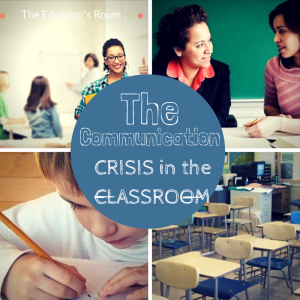 When it comes to communication, teachers are the experts, but as many workshops as teachers attend out there in the vast world of professional development, many seldom (if ever) help teachers communicate more effectively with each other. It seems to be the one missing link, so to speak, in the ideology of education. So, how do we become master communicators with our peers and/or administrators? According to Part I of this article, a great way to begin is to visit the ten Touchstones. I was introduced to these Touchstones after attending a meeting based on the Parker J. Palmer Book, Courage to Teach, and being so impressed with their wisdom, decided to modify them a bit to fit absolutely any meeting of any kind. So while communicating more effectively with the Touchstone guidelines is a perfect place to begin, a perfect place to continue growing is by realizing the repercussions of our world if we don’t become expert communicators with our fellow teammates. The results can be catastrophic…possibly causing an entire building of teachers to shut their doors, work in isolation, frustration and fear. So, let’s move forward with the conversation about teacher to teacher/administration communication and the importance of learning its subtle art.
When it comes to communication, teachers are the experts, but as many workshops as teachers attend out there in the vast world of professional development, many seldom (if ever) help teachers communicate more effectively with each other. It seems to be the one missing link, so to speak, in the ideology of education. So, how do we become master communicators with our peers and/or administrators? According to Part I of this article, a great way to begin is to visit the ten Touchstones. I was introduced to these Touchstones after attending a meeting based on the Parker J. Palmer Book, Courage to Teach, and being so impressed with their wisdom, decided to modify them a bit to fit absolutely any meeting of any kind. So while communicating more effectively with the Touchstone guidelines is a perfect place to begin, a perfect place to continue growing is by realizing the repercussions of our world if we don’t become expert communicators with our fellow teammates. The results can be catastrophic…possibly causing an entire building of teachers to shut their doors, work in isolation, frustration and fear. So, let’s move forward with the conversation about teacher to teacher/administration communication and the importance of learning its subtle art.
The Communication “What If?”
The beginning of communication comes from deep within; the deep need to connect; to come together for a common purpose. There is a brilliant composer named Eric Whitacre that is well known for many reasons, but one reason in particular is due to his project of creating a virtual choir where he brought 2,292 young singers from 80 countries that came together to sing for the Glasgow 2014 Commonwealth Games in partnership with UNICEF (a world’s leading children’s organization). The fact that he had these children, ages eighteen and under (some as young as two years old) record their voice in their own homes to make up a choir is an astounding feat. What if we took a cue from Eric’s brilliance and came together for one common purpose as well? What if we took all our voices, as different as they may seem, and blended them together? What could we accomplish? Something as beautiful as What If?
Lack of Proper Communication – Dr. Emoto’s Rice Experiment
Everyone has heard the saying, “Sticks and Stones…”, but there has been true research out there that proves that harmful words, helpful words, or neglect really can make a difference (for better or worse) in people. Perhaps you have heard of the famous experiment by Dr. Emoto where he puts rice in three jars of water and to one jar he says only good, nice things…to the other jar he says mean, hateful things…and to the other jar he simply ignores and neglects. Throughout his experiment he begins to notice that the rice that he says nice things to began to give off a sweet, pleasant odor. The rice that he said mean things to, turned black. The rice that he neglected or ignored began to rot. In his experiment he compared the rice to people, saying that we should care for them (children in particular) and that in the end, indifference, according to Emoto, did the greatest harm. Supposedly hundreds of people have tried this experiment with the same results. Whether you believe in this rice experiment or not, the lesson still shouts volumes to us …that kind words heal, hurtful words bruise and neglect will ultimately do the most harm.
The Communication Link
It is only through proper communication and supporting each other (even though you disagree on things) that your school as a team can pull together to make a force to be acknowledged. In an earlier article this year, I wrote about a chain that we all represent called The Weakest Link. In this article, I emphasized that the weak link in the chain does not mean that you cut out the weak link, but rather you strengthen it. It takes the mentality of “We’re all in this together,” to get things done. It takes putting the “me” behind the “we”. It takes communication and determination. It takes kindness, patience and yes…hard work, but in the end, it will all pay off.
What if we paid attention to Parker J. Palmer’s Touchstones and understood people where they were? What could we accomplish if we came together like Eric Whitacre’s virtual choir or spoke to each other kindly such as in Dr. Emoto’s Rice Experiment? I believe that a new understanding would begin to emerge and some pretty beautiful things would begin to take place. There’s just no stopping a team of “we”!



